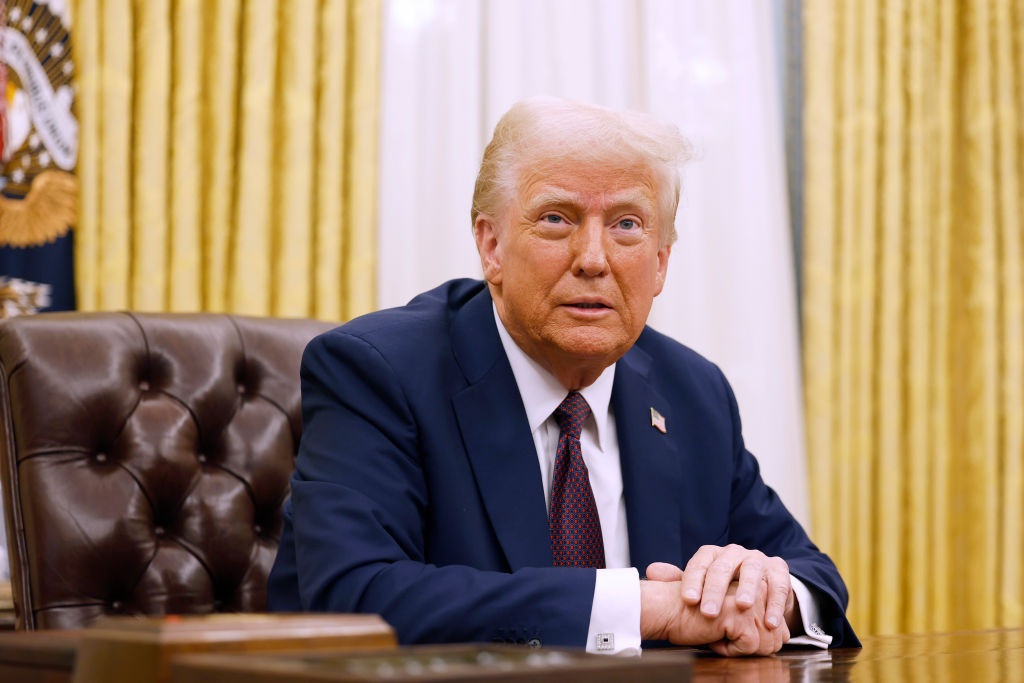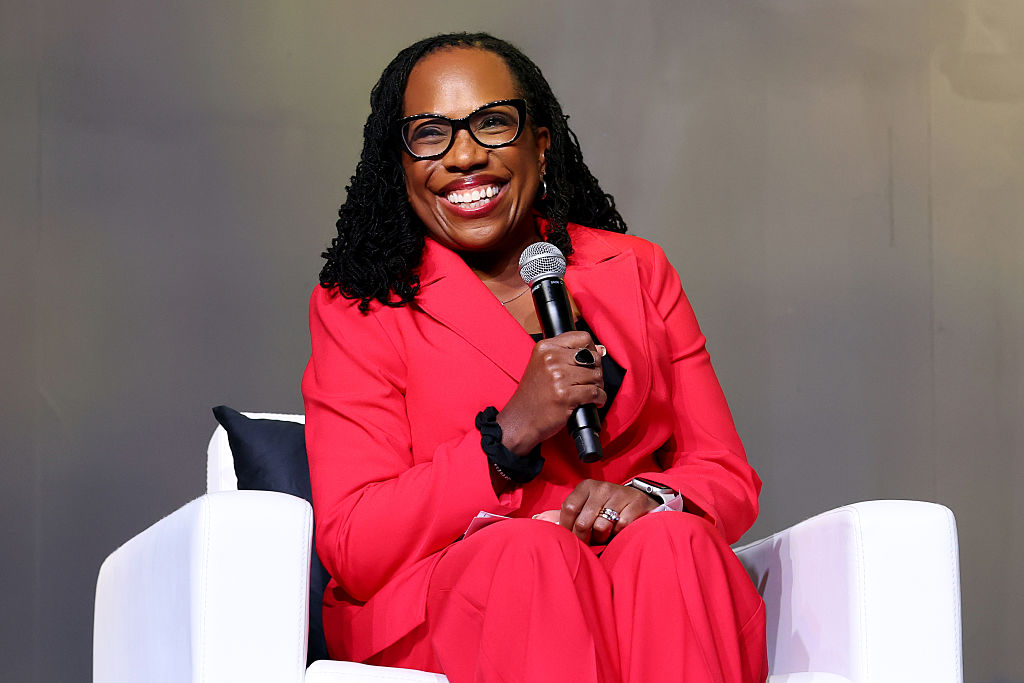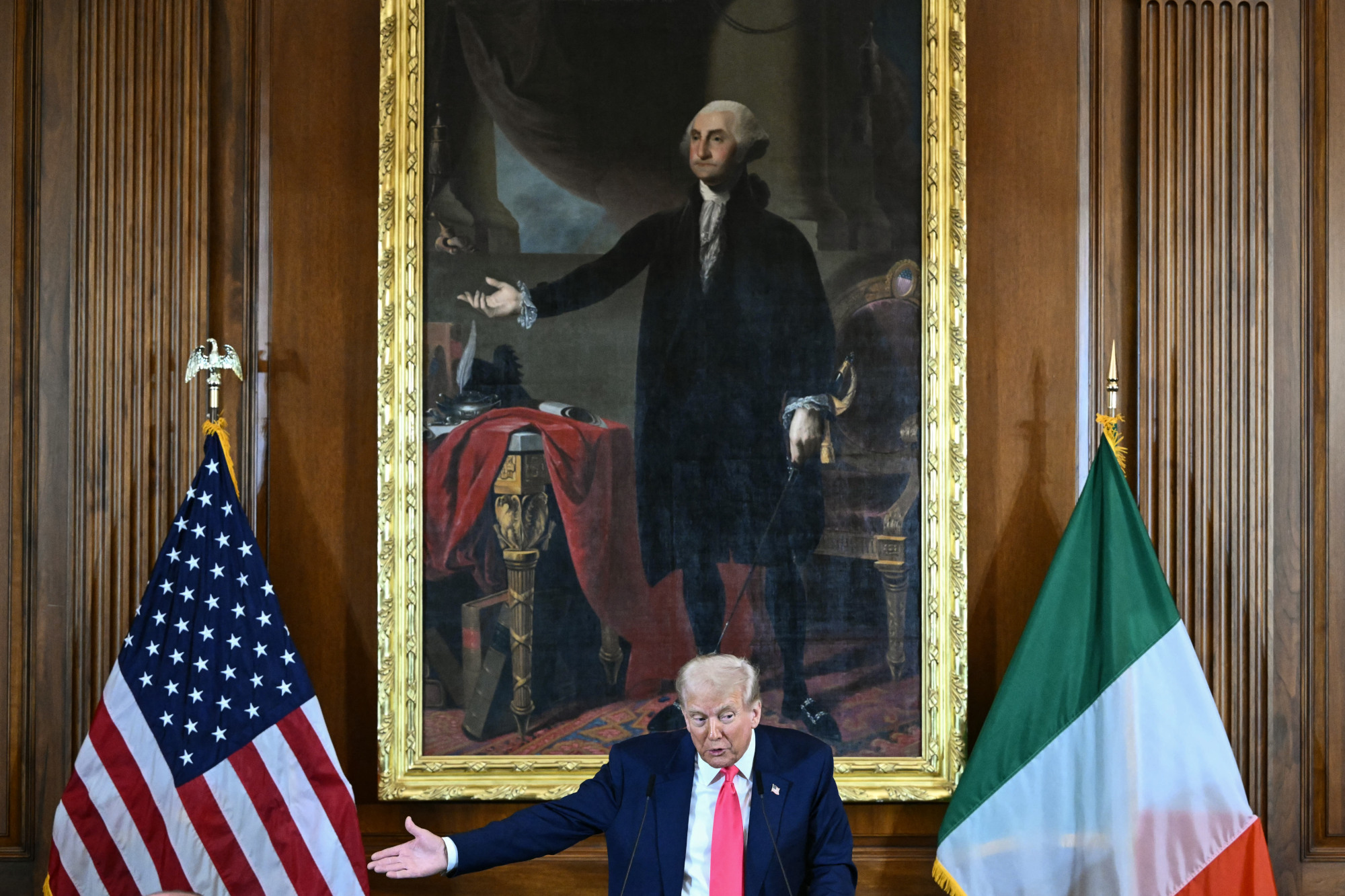To win elections in a two-party system, the victor needs to erect a big tent. He needs to persuade all kinds of voters in the general election, including many who disagree with each other (but disagree with the other party even more), to vote for him. Experienced politicians call it, “the politics of addition, not subtraction.” The rest of us call it “big tent politics.”
What can poke holes in that tent? What will allow the rain to come pouring in? Those questions loom over Republicans, looking for an umbrella amid tariff disagreement, a volatile market and whispers of a possible recession.
The skies were clear when the big issue was illegal immigration. The party base loved it and so did voters. But the skies darkened once President Trump imposed serious tariffs against virtually all US trading partners, including some of our country’s closest allies. That threatened to raise consumer prices and disrupt supply chains for domestic manufacturers, which rely on foreign parts and materials.
Many are speculating about the President’s real plan for tariffs, since his announcement yesterday that the higher “reciprocal” rates would be paused for 90 days for every country apart from China. No one knows what he’ll do next. All we can be certain about is what he has explicitly said about tariffs so far, perhaps better described as trade barriers, since “tariffs” is really a shorthand for all import barriers.
First, the President has said the higher tariffs are fair, not punitive, because they retaliate against partners who have treated the US unfairly for years. Second, the new measures may be paused, but they won’t be permanently lifted until our trading partners lower their barriers against US products. In fact, they will be raised if those partners retaliate. He showed he was serious by doing just that against China as soon as it retaliated.
Third, the US is ready to negotiate mutual reductions of trade barriers – a position he did not originally take, but has heavily suggested now. Fourth, we will seek deals tailored to each partner, not “one size fits all.”
The domestic politics of Trump’s measures depends on two, closely-related developments. The first is how these tariffs affect the US economy. The other is how the economic impact affects voters next year in the midterm elections. Could it jeopardize the Republicans’ narrow majority in Congress?
Tariffs or not, a shift in power is certainly possible. Republicans could lose their slim House majority in November 2026, especially if voters are harmed by a broad-based economic downturn or if some districts are damaged by a downturn in specific industries. Republican Senators and Representatives can already feel that pressure building. So can enthusiastic Democrats, who lack a leader and a positive agenda, but can unite to oppose Trump.
As soon as Trump imposed the new tariffs, rain began leaking through the Republicans’ tent. The internationalist wing of the party loves free trade, hates high tariffs, and hates them most when they hit our long-term allies. The result, they fear, will not only damage the US economy, it will undermine decades of American global leadership.
Others, both Republican and independent, simply look at the immediate results. They fear higher prices, a possible recession and slower growth, which translates to stagnant wages. They worry about the stock market decline, not only because it affects retirement income and consumer spending (via “wealth effects”), but also because the stock market anticipates upcoming troubles in the economy.
That trouble would begin in two sectors: those that depend on exports and others that depend on imported parts and raw materials to build finished products. Layoffs in those sectors then spread to the wider economy, both because consumers have less to spend and because everyone stops spending and investing because they are worried about the uncertainty.
We are already beginning to see these problems emerge, and they are unlikely to completely disappear, even with the tariff climbdown. Politicians are acutely aware of them, as they should be. Their sensitivity is what makes a democratic system responsive.
But responsive to whom? Politicians face two sets of voters, whose interests may diverge: those who vote in primaries and a larger group who vote in general elections. Appealing to both groups is a problem in today’s divided American electorate because what attracts the most rabid, ideologically-motivated primary voters tends to alienate the centrist independents who are essential to win in November. Politicians in both parties feel that tension.
Take Republican politicians concerned about Trump’s new tariffs. They know their seats are at risk if voters experience any kind of economic contraction around November 2026. (If a downturn ends more than six months prior to the election, its effects are much weaker.) But November is not the only election those politicians face, and it is not their only pitfall. To get to November, they must win their primaries, and that is incredibly difficult if they face vocal opposition from the President, who is enormously popular with the party base. Fear of Trump’s wrath is why Republicans are so cautious in opposing his tariffs, even in districts facing immediate hardships. These elected officials fear losing to a primary opponent backed by Donald Trump and his MAGA coalition.
This dilemma for politicians is deeper in today’s divisive, ideological climate, but it is inherent in the basic structure of American electoral politics. Our two-party system separates the whole electorate, with all its disparate components, into two enormous coalitions. Each includes groups with widely varying interests and priorities.
Think of Franklin Roosevelt’s winning coalition, which included Northern blacks (and the big-city political machines that needed their votes) and Southern segregationists. Those components broke apart during the Civil Rights movement of the 1960s. Republicans capitalized with a “Southern strategy” that relied on white voters across South, but without supporting the segregationist policies that would have repelled educated suburban voters in the North and Midwest.
Each party also has its “activist base,” which funds campaigns and dominates primary elections. Today, among Democrats, that base is much further left than the coalition needed to win general elections. We see that split every day in the fissures between the progressive wing, led by Bernie Sanders and Alexandria Ocasio-Cortez, and centrists, who currently lack a leader.
That fissure was evident when Senate Minority Leader Chuck Schumer faced a difficult vote on a Republican spending bill that was necessary to keep the government open. Although Republicans have a Senate majority (53 members), they don’t have the 60 votes needed to break a filibuster. Without a few Democratic votes, the filibuster would continue, the bill would fail, and the government would be forced to shut down all non-essential operations. (Some essential operations like the military and social security offices would remain open.)
Progressives favored the filibuster and the shutdown. Schumer did not, figuring that general election voters would blame it on his party and cost them seats in November 2026. Ultimately, he opposed the progressives, kept the government open, and reaped the whirlwind from the party’s furious base. Their fury has not subsided.
This kind of cleavage is hardly unique to Democrats. Both parties face an enduring tension – and sometimes an unbridgeable divide – between their highly-motivated primary voters and centrists in the general election. That tension is inherent in a two-party system with primary voting and “first-past-the-post” winners, as opposed to proportional representation.
The Trump White House is trying to navigate that tension right now as it implements its tariff policy. Right now, though, the public is feeling more anxious than liberated. The resolution won’t come until we see the results of trade negotiations and their impact on the economy.
What are the likely results of those negotiations? First, small economies that depend on the US market will be forced to concede and do it quickly. Second, industries that export to the US will lobby their government for concessions and invest more in the US to lessen the impact of tariffs, now and in the future. US industries are also lobbying, led by those that export heavily or rely on imported parts. They will also turn to domestic suppliers and those in countries that have struck deals with Trump. That means shifting production away from China and into Vietnam and the Philippines, a process that is already well underway.
Unfortunately, this reconfiguration takes time. (Whether Mexico gains from this process is a huge, unanswered question.) And much bigger markets, especially the European Union, are in a far stronger negotiating position. For them, the negotiations are really a “game of attrition,” that is, who can outlast the other, much like the war in Ukraine today.
To win that war of attrition and force big trading partners to strike good deals, Trump needs to convey a credible signal that he won’t bend before they do. That’s why pressure from endangered Republican Senators and Representatives is so dangerous for his negotiating position. That’s also why Trump has just paused the tariff increases on nearly all countries that have approached him to negotiate. It does not include China, which has rebuffed the US, raised its own tariffs, and been met with a devastating US tariff of 125 percent.
It is impossible to know if Trump’s embrace of tariffs is because he really wants a more autarkic world economy, with a stand-alone America, or because he wants the opposite: a more open world trading system with a level playing field, and is using tariff threats to forge it. He gains more negotiating leverage by saying, “Hey, I’m fine with these high tariffs if you don’t want to lower yours.” The fact that political analysts cannot discern Trump’s real goal is not a flaw. It’s a feature. And a very valuable one.
Now that Trump has proven he is actually willing to impose these tariffs – they are not a bluff – he can pause them to give his negotiators time to strike deals. The pause also relieves the immediate pressure building on his congressional allies. The downside is that his “on-again, off-again” policies create uncertainty.
In these negotiations, China is the major outlier for three reasons. First, it has imposed a major set of retaliatory tariffs. Trump won’t bend to that threat. Second, China has cheated on the deals it previously struck. Bargains with them simply aren’t reliable. Third, and most important of all, China is America’s most dangerous long-term enemy. Trump doesn’t want to amplify the threat they pose by strengthening their economy. Quite the contrary. He wants to put as much pressure on China’s economy as possible. That economy is already in serious trouble, and Trump would much rather compound their problems than relieve them. (China, in turn, will look to sell more to Europe, which will force the EU to react.)
This bumpy terrain is likely to yield several outcomes. With China, expect a continued trade war, deteriorating diplomatic relations, and increased military tensions over Taiwan. Xi himself will face greater domestic threats to his control. With all other countries, expect bilateral deals. The only question is how good will they be for the US economy. There will likely be more foreign investment in the US economy, as Trump has said, but the rationale for that investment will lessen if the US strikes long-term trade deals. Finally, until these deals are concluded, global markets face increased uncertainty. To quote Bette Davis, “fasten your seat belts, it’s going to be a bumpy night.”


























Leave a Reply